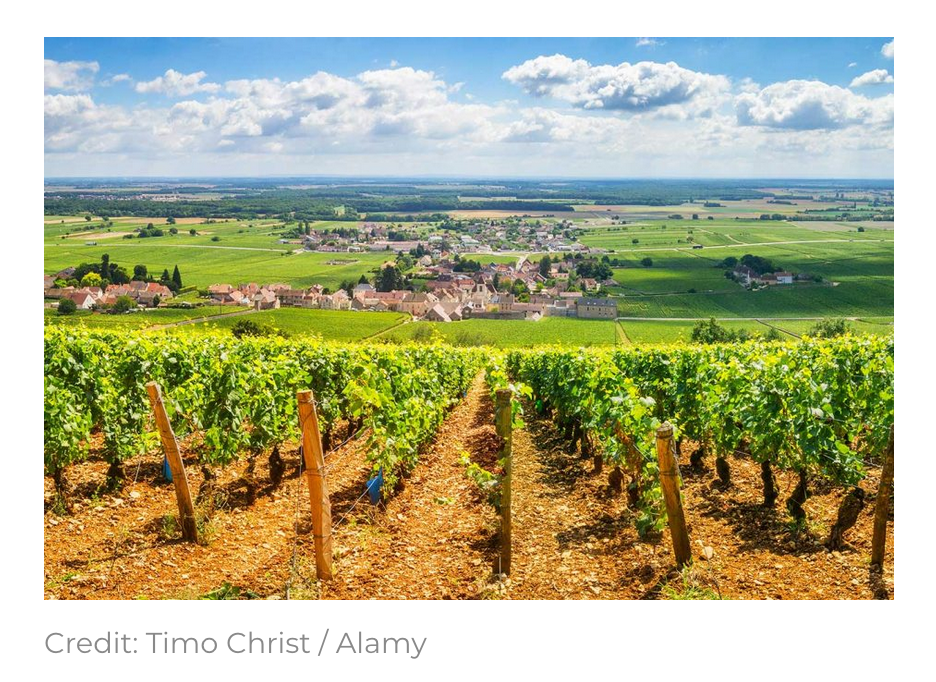

Why does the Bourgogne Côte d’Or appellation exist?
It is technically a new geographical denomination within the regional ‘Bourgogne’ appellation.
Its aim is to highlight the greater potential of the Côte d’Or, in the heart of Burgundy, to produce unique wines.
Therefore, regulations require the exclusive use of Chardonnay and Pinot Noir grown there.
Since it’s designed to be a cut above the regional Bourgogne appellation, the yields must be lower compared to wines labelled simply Bourgogne, which may contain grapes grown anywhere in the wider Burgundy area.
Anyone who has been disappointed by a thin Bourgogne Rouge, which turned out to be made entirely from grapes grown in the less prestigious parts of Burgundy, will appreciate the new appellation.
Where does it sit in the Burgundy hierarchy?
It is one of the 14 geographical denominations that sit within the regional Bourgogne appellation.
It sits above regional Bourgogne appellation wines and just below village-level wines, a spokesperson for Burgundy’s wine council, the BIVB, told Decanter in 2017.
The area covered includes Côte d’Or vineyards spread across 40 villages along a 65km stretch from Dijon to Maranges, spanning the Côte de Beaune in the south and Côte de Nuits in the north.
Who is using Bourgogne Côte d’Or on wine labels?
Some critics and producers have questioned whether a new appellation could confuse consumers, given the already-complex nature of Burgundy’s climats.
Yet, several winemakers and merchant houses have embraced the Burgundy Côte d’Or tag.
Around 1.6m bottles of Bourgogne Côte d’Or red wines were produced from the 2018 vintage, up by 20% on the inaugural 2017 crop, according to the BIVB.
Around 920,000 bottles of white wine were made from the 2018 harvest, up by 55% on 2017, it said.
Much of this volume comes from top négociants.
Maison Latour is now making both a red and white Bourgogne Côte d’Or, while Louis Jadot is making a red.
Bichot has changed the label of its Secret de Famille from Bourgogne Rouge to Bourgogne Côte d’Or, since the grapes traditionally have come from that part of Burgundy.
Some top growers are also on board. Pommard’s Domaine Parent has started using the new appellation for its Cuvée Pomone, and Meursault-based Michel Bouzereau has begun labelling its Clos du Moulin as Bourgogne Côte d’Or.
These wines were formerly labelled Bourgogne Rouge and Bourgogne Blanc respectively, but have always met the requirements of the new appellation.
Jean-Nicolas Méo, of Méo-Camuzet, has taken the concept a step further by bottling three different wines under the new appellation: Hémisphère Sud, using grapes from Côte de Beaune; Hémisphère Nord, using grapes from the Côte de Nuits; and Cuvée Etienne Camuzet, using grapes exclusively from the estate.
Will prices rise for Bourgogne Côte d’Or wines?
It’s still early days, but there has been an assumption that ‘Côte d’Or’ wines would generally cost more than those labelled simply as Bourgogne.
One trade figure told Decanter in 2017 that prices could be around 20% higher on average.
However, many factors affect price, from policies of individual growers and harvest size to currency swings and also international trading conditions; witness the recent 25% import tariffs placed on certain European still wines entering the US.
Additional copy by Chris Mercer
March 14, 2020
